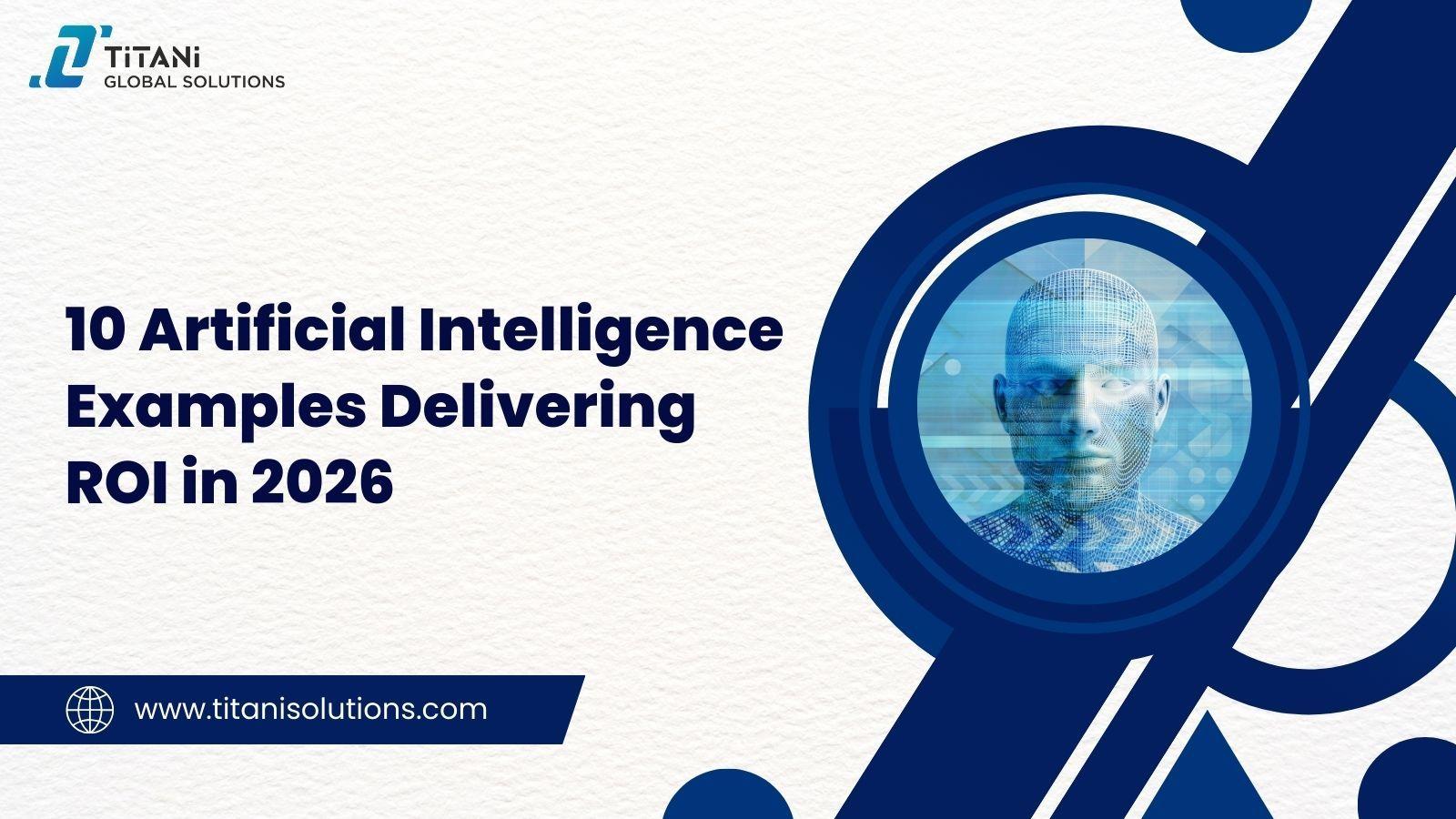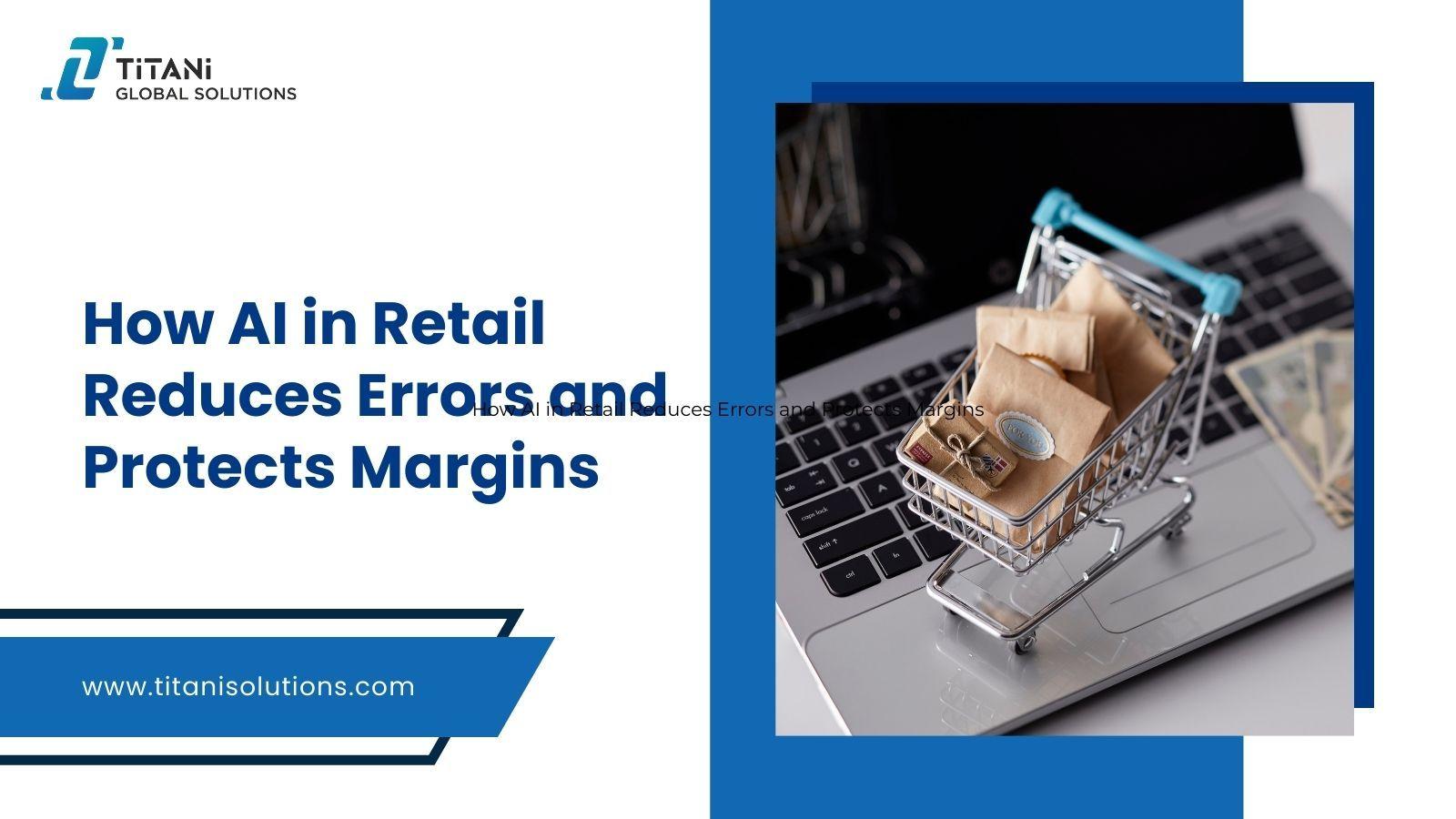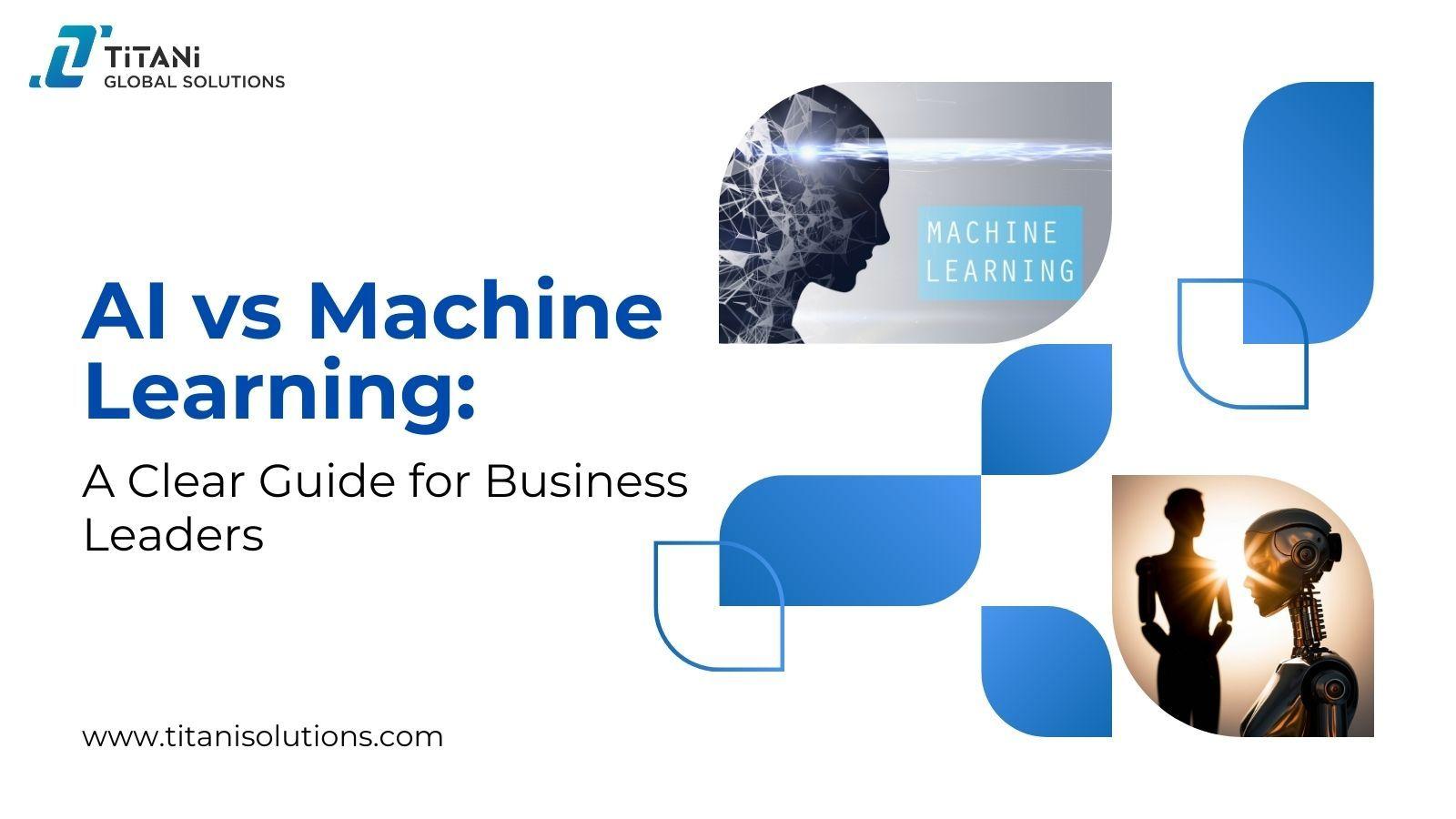Summary for Decision-Makers
Beyond automation: AI communication connects data, people, and decisions through intelligent dialogue — transforming information into understanding and coordinated action.
Stronger enterprise alignment: Organizations that embed AI communication achieve greater cross-functional clarity and faster decision cycles.
Trust as a performance driver: Responsible AI chat builds confidence and accountability, turning governance into a competitive advantage.
Transparency in strategy: As enterprises prioritize explainability and ethical design, intelligent communication becomes the foundation of responsible innovation.
The next wave of transformation: Communication itself is evolving into an intelligent operating layer — enabling enterprises to think, learn, and act as one.
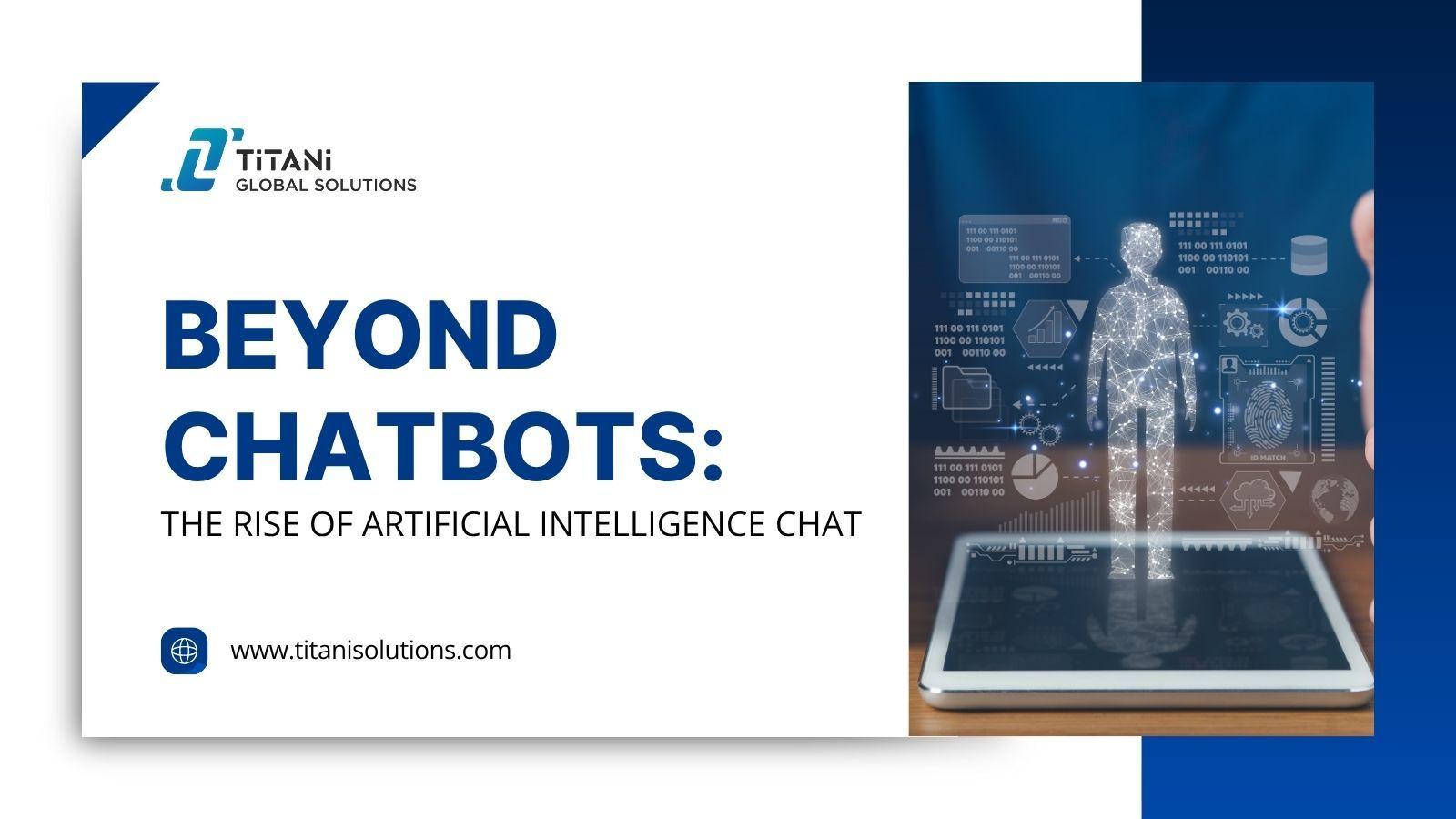
Every major digital transformation starts with a shift in communication. Email brought speed. Dashboards brought visibility. Now, AI chat is delivering the final piece: Deep Understanding.
Is your data stuck "sleeping" in fragmented reports? Conversational AI is the intelligent layer built to wake it up.
Imagine a project manager asking, "What were last quarter's performance gaps?" and receiving an instant, contextual answer drawn from Finance, CRM, and HR. This isn't science fiction—it's the reality for enterprises embracing this shift.
The key difference: Modern AI chat systems are designed not just to reply faster, but to understand deeper—interpreting intent, connecting cross-functional data, and translating complexity into clarity.
In this new paradigm, communication is no longer a support function. It's the intelligent operating layer driving alignment and decision velocity. The question isn't if AI will shape enterprise communication, but how your organization will lead it.
Beyond Chatbots: Artificial Intelligence Chat and the Future of Enterprise Communication
The old chatbot was mere automation. It was a digital receptionist programmed with scripted responses, handling routine questions in isolation. This made communication efficient, yet fundamentally fragmented.
That era is ending. Forward-thinking enterprises now realize communication isn't a support function anymore. It has become an Intelligent Operating Layer that connects how the entire organization thinks, acts, and decides.
Modern AI chat systems go far beyond simple replies. They bring context, clarity, and coordination to every interaction, transforming how enterprises connect people, data, and systems.
Imagine this: a logistics director can ask for warehouse performance across multiple regions, or a finance leader can generate a compliance snapshot in seconds. All of this happens through a unified, evolving dialogue that continuously learns from every interaction.
Real-world adoption is driving this shift. For example, Siemens and HSBC have begun integrating conversational AI across internal systems, enabling employees to retrieve compliance data or generate real-time reports through natural dialogue.
This transformation is not only operational but also cognitive. According to Deloitte Digital, enterprises adopting conversational AI internally have achieved up to 30% cost reduction and a 25% boost in team productivity.
The true shift lies in how organizations think. Decision-making itself is becoming conversational. Dashboards are giving way to dialogue, where questions lead directly to action, and intelligence becomes participatory rather than passive.
At Titani Global Solutions, we call this evolution enterprise intelligence. It represents the convergence of communication, insight, and execution, ensuring every interaction drives measurable progress.
The Trust Dividend: How Smart Governance Turns Innovation into Value
In the age of artificial intelligence, trust is no longer a cost. It is compound interest. Every enterprise strives for innovation, but sustainable growth now depends on whether that innovation can be trusted, measured, and governed. As Gartner notes, "Technology doesn’t transform a business. Alignment does."
True innovation is not about the number of AI tools deployed. It is about how effectively they reshape the organization’s thinking. The most successful enterprises treat AI chat not as an experiment, but as the connective layer of enterprise knowledge. It helps people ask sharper questions, surface deeper insights, and make faster, evidence-based decisions.
From Data to Dialogue: Redefining Enterprise Awareness
When a regional director asks, "Which markets underperformed this quarter?" and instantly receives a response that combines CRM, finance, and market data, that is not mere automation. That is organizational awareness.
This is where measurable outcomes take center stage. The Lucidworks 2024 Enterprise AI Report found that seven in ten AI initiatives stall because outcomes are not tied to measurable metrics. Leaders link every conversational interaction to tangible results: faster approval cycles, fewer redundant tasks, and higher decision accountability. They treat data as dialogue, not documentation.
Why Governance Multiplies ROI
Innovation without governance rarely compounds. AI systems now manage sensitive data, influence decisions, and embody enterprise reasoning itself.
Organizations embedding governance early through bias detection, audit trails, and model validation see significant performance gains. For instance, according to PwC, AI initiatives with measurable trust frameworks achieve 1.5x faster deployment cycles. Furthermore, the PwC Global AI Study showed these organizations see 20% higher ROI than those that do not.
Trust, in this context, is not a compliance checkbox. It is a performance multiplier.
At Titani, we have found that the most resilient teams test continuously, govern transparently, and design ethically. Guardrails do not slow innovation. They make it repeatable. Because the real return on innovation is not speed. It is confidence, the trust dividend that fuels every breakthrough worth keeping.
The Hidden Architecture of Intelligent Communication
Every enterprise runs on communication, but often, this very process becomes the biggest obstacle to clarity. Data remains trapped in departmental silos, insights move more slowly than intent, and true alignment depends on reconciling fragmented versions of reality.
Artificial intelligence chat redefines this foundation. It introduces an intelligent layer where every function can access, interpret, and act on shared knowledge. This is not another collaboration platform. It is a cognitive infrastructure where understanding becomes the operating logic of the business.
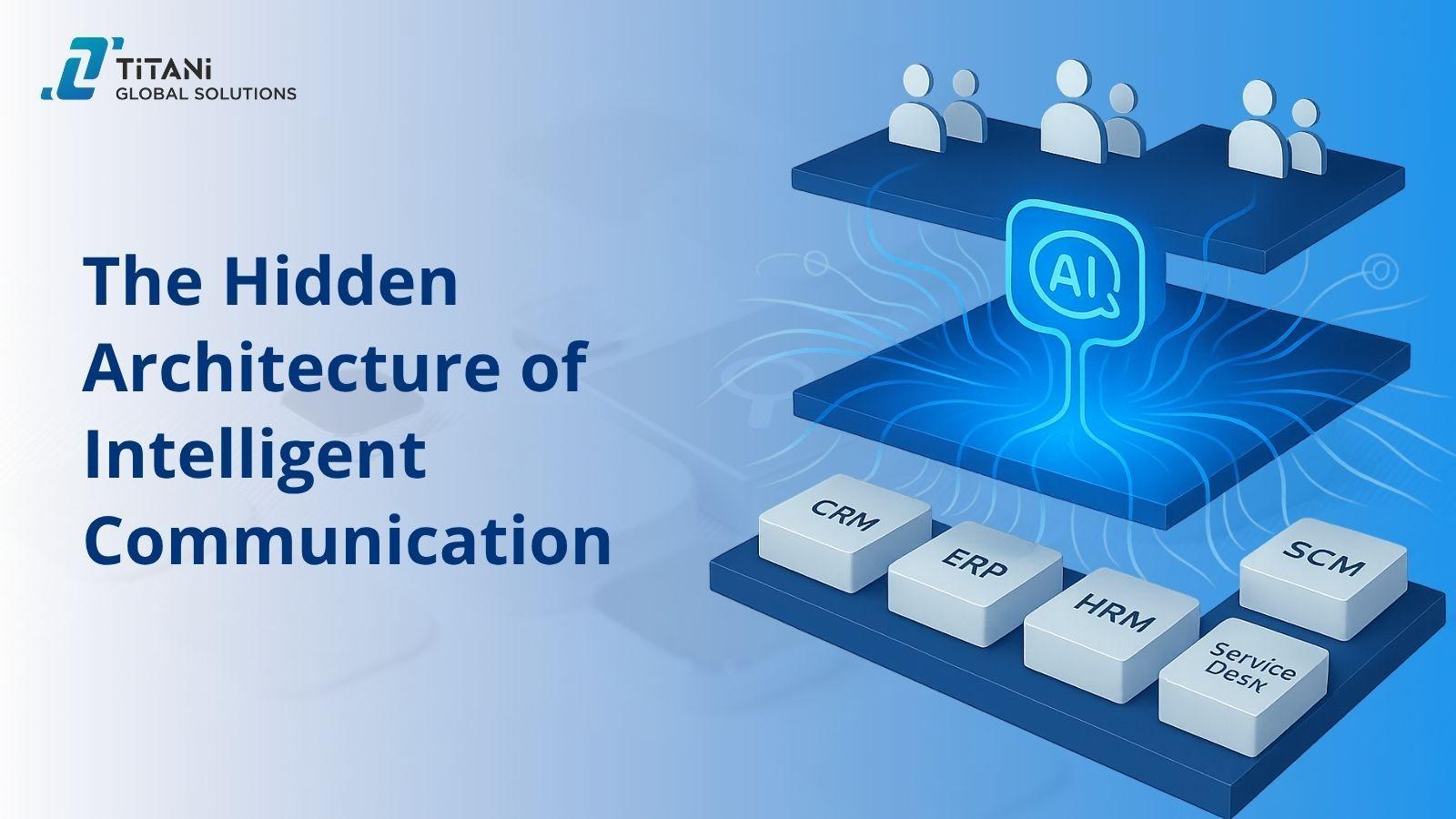
1. Connect: Turning Silos into Strategy
Connectivity has never been the end goal. Context has. Departments typically operate as islands: Sales lives in CRM, Finance in ERP, HR in HCM. Each captures a piece of reality, forcing leaders to reconcile fragments instead of acting on a single, unified narrative.
The AI communication layer sits above these systems, translating technical data into unified business meaning. Using natural language understanding (NLU) and relationship mapping, it builds a living knowledge graph that enables the organization to "think across itself."
Example: When a regional manager asks, "What’s the status of our top client’s shipments?" the system composes a complete narrative: "Four shipments are on schedule, two delayed due to customs clearance; invoice payment confirmed."
The impact is profound. By eliminating the "coordination tax"—the time teams spend aligning data—enterprises regain cognitive agility. McKinsey calls this the shift "from data centralization to meaning centralization."
In Practice:
A leading European logistics firm integrated CRM, ERP, and support systems through conversational AI.
Result: Data retrieval time reduced by 58%, and decision cycles shortened by two business days (according to Accenture Research).
2. Understand: Turning Data into Direction
Data abundance does not equal organizational intelligence. True understanding lies in the system's ability to reason—to connect why things happen with what decisions should follow. Modern AI chat systems, equipped with Retrieval-Augmented Generation (RAG) and domain knowledge graphs, allow enterprises to reason across both structured and unstructured content.
This reasoning layer transforms communication from mere inquiry to true cognition. It does not just answer. It learns patterns, detects anomalies, and infers causality. The result is collective intelligence, where machine reasoning amplifies human expertise.
Example: A logistics head asks, "Why are shipments from Dubai delayed this week?" The AI correlates supplier contracts, weather data, and port congestion reports to identify the cause, then recommends alternate routes or suppliers. This is situational cognition, where understanding precedes action.
Enterprise Impact:
Enterprises embedding contextual AI achieve 25–30% faster root-cause analysis and lower decision fatigue (according to Deloitte Digital).
Organizations adopting reasoning-based AI improve decision accuracy by up to 20% within the first year.
3. Act: Turning Insight into Execution
Insight without orchestration is unrealized potential. The next frontier of enterprise communication is conversational execution—transforming insight into coordinated action under transparent governance.
In this model, AI chat serves as the control plane. It converts intent, such as "Send reminders to teams with incomplete training," into compliant, policy-aligned workflows. By integrating with collaboration tools and ERP systems, it ensures consistency while embedding accountability into every process.
Example: When an HR Director says, "Notify managers whose teams missed compliance deadlines," the AI identifies the right cohorts, drafts messages, and logs every action for auditability, turning a multi-step process into a single command.
The true value is governed by automation. Each task becomes self-documenting, creating a real-time audit trail that merges execution with oversight.
In Practice (Case Study):
A multinational manufacturer deployed a conversational execution layer across HR and compliance.
Result: Task completion time dropped by 46%, and governance adherence improved significantly within three months (according to Gartner’s 2025 Conversational AI Report).
When viewed together, Connect, Understand, and Act form the hidden architecture of intelligent communication. They transform communication from an operational channel into an intelligent current that powers every process and decision. This is how modern enterprises evolve from information overload to synchronized intelligence, where comprehension replaces chaos, and technology defines the rhythm of how the organization learns, decides, and grows.
The Trust Layer: The Invisible Architecture Behind Responsible Intelligence
As artificial intelligence chat becomes embedded across enterprise workflows, from service portals to decision support, trust has become its defining architecture. The Trust Layer ensures every conversation remains secure, explainable, and accountable.
When responsibly designed, AI chat does not just follow governance. It enforces it, actively strengthening the three pillars of a compliant and intelligent enterprise: Security, Transparency, and Governance.
1. Security — AI That Protects and Learns to Protect
Traditional security safeguards systems from external threats. Responsible AI chat systems add a new dimension: they detect, adapt, and respond to those threats in real time.
Every chat request becomes both a communication and a security event. Responsible AI-driven systems apply context-aware threat detection, semantic filtering, and policy-level reasoning to monitor risks during interaction, not just afterward.
Examples in Action:
Data Classification by Intent: The AI recognizes if a query involves sensitive information (e.g., payroll, client contracts) and automatically masks or anonymizes results before responding.
Adaptive Access Control: Using contextual understanding, the chat dynamically adjusts permission levels based on the user’s role, location, and intent, preventing accidental exposure of restricted data.
Self-Auditing Logs: Each dialogue is logged with metadata (user role, dataset used, compliance tags) to create an immutable record for future forensic analysis.
In Practice:
According to Gartner’s 2025 AI Security Review, organizations that embed adaptive AI security mechanisms (e.g., semantic threat detection) see 43% fewer exposure incidents and 57% faster containment.
More importantly, these systems reinforce resilience through learning feedback loops. When the system detects abnormal input or policy violations, it retains its filters, meaning the system not only prevents future breaches but also learns from each one. AI becomes an active shield in the organization’s cyber resilience strategy.
2. Transparency: Making AI Conversations Traceable and Explainable
In many enterprises, "black box AI" remains the main reason trust collapses. Responsible AI chat systems are now designed for radical transparency, where every insight or recommendation comes with traceable evidence and contextual clarity.
AI chat actively exposes its reasoning process to users in three critical ways:
Explainability at Interaction: When the AI answers, it attaches confidence scores, data sources, and policy context (e.g., "According to internal Procurement Policy 4.2..."). This transforms machine answers into human-readable reasoning, enabling employees to validate before acting.
Data Provenance Mapping: Every AI-generated answer links back to specific datasets and document versions. In regulated industries, this meets audit trail requirements (under NIST and ISO/IEC 42001).
Continuous Feedback and Redressability: Interfaces include "Why did you recommend this?" or "Report inconsistency" buttons. Each feedback loop updates the model’s reliability metrics and retrains reasoning thresholds.
In Practice:
The PwC Responsible AI Report 2024 found that organizations integrating explainability and user feedback loops achieved a 20% increase in internal adoption and a 17% decline in decision escalations.
By merging technical traceability with conversational clarity, AI chat systems build a workplace where understanding is mutual, not just between humans, but between humans and machines.
3. Governance — AI as a Living Compliance Partner
Governance once meant static policies reviewed annually. In the age of conversational AI, governance has become continuous, contextual, and data-driven, and artificial intelligence chat is one of its most effective enforcers.
Modern enterprises embed governance logic directly into their AI chat environments. Instead of waiting for compliance audits, these systems:
Flag non-compliant actions in real time. For example, if a manager tries to generate a financial forecast using outdated or unauthorized data, the chat system alerts them instantly.
Implement Human-in-the-Loop Safeguards. Sensitive requests, such as policy exceptions or pricing changes, are automatically routed to an authorized reviewer before execution.
Audit Continuously, Not Periodically. Every AI-generated answer is tagged with model version, dataset, and timestamp, allowing regulators to reproduce the output months later.
In Practice (PwC):
The PwC Global AI Study shows that enterprises embedding proactive AI governance early in deployment achieve 20% higher ROI and 25% faster time-to-market because compliance is designed into workflows rather than retrofitted later.
Responsible AI chat acts as a governance agent. It reminds users of rules, enforces policies conversationally, and records compliance as part of its daily operation. This transforms governance from a burden into a natural byproduct of every interaction.
When security protects intelligently, transparency explains effectively, and governance operates continuously, trust becomes predictive rather than reactive. The AI system does not just respond within policy. It anticipates risk and compliance needs before humans notice. In this architecture, AI chat is an active participant in responsible enterprise intelligence, amplifying human productivity while enforcing organizational ethics in real time. Trust evolves from an outcome to an infrastructure of intelligence, a living system that learns, reasons, and governs alongside people.
Final Reflection: The New Language of Enterprise Intelligence
Every era of transformation begins with a change in how we connect. The telephone redefined distance. Email redefined speed. Today, artificial intelligence chat is redefining understanding, enabling organizations to think, learn, and decide as one.
In this new architecture, communication is no longer an exchange of messages but an exchange of intelligence. It is how enterprises translate complexity into clarity and information into insight. When every department, system, and decision can speak the same contextual language, organizations stop reacting to change. They start shaping it.
However, progress without trust is fragile. The future of intelligent communication will not be measured by how fast AI automates, but by how responsibly it learns. The trust Layer built on security, transparency, and governance ensures every decision is explainable, every interaction auditable, and every system aligned with human values. For enterprise leaders, this marks the next great frontier: building organizations that do not just collect data but truly converse with it.
At Titani Global Solutions, we believe the next generation of digital leadership will be defined not by how much technology a company adopts, but by how intelligently it listens, learns, and leads through it. The most advanced systems are not those that think faster than people. They are the ones that help people think better, together.
The conversation has shifted. Has your enterprise kept pace?
As enterprises step into the era of intelligent communication, the question is not whether you will adopt AI chat. It is how responsibly and intelligently you will lead through it.
Explore our AI communication insights today to see how leading organizations are building trusted AI systems and shaping the future of enterprise intelligence.

